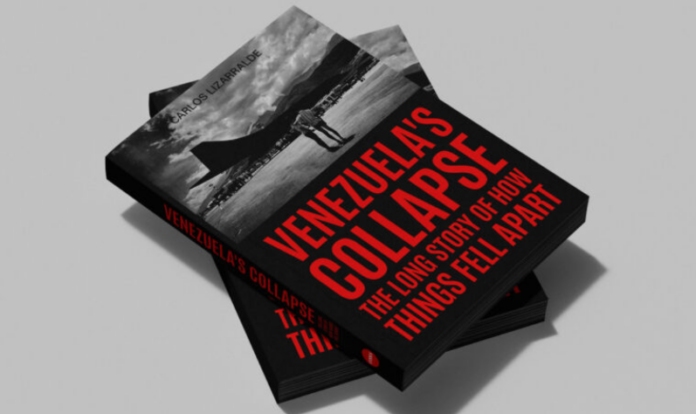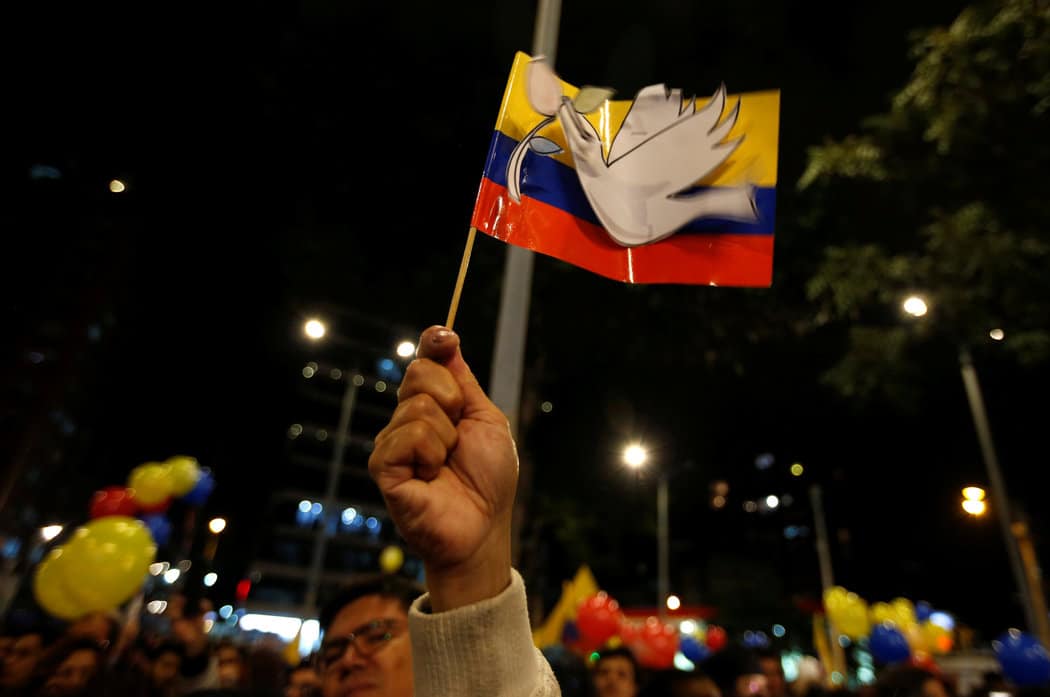Per chiunque voglia comprendere, oltre le miserie del chavismo, le più profonde, storiche e strutturali ragioni della catastrofe che, ormai da oltre un decennio, sta vivendo il Venezuela, tutto da leggere è il libro “Venezuela’s Collapse, the Log Story of How Things Fell apart” di Carlos Lazarralde. Ne pubblichiamo qui sotto la prima pagina:
Breaking the sound barrier on every flight, the Concorde supersonic jet had a way of pushing the imaginary limits of time and space. During the plane’s inaugural flight of the Paris-Caracas route on April 10 of 1976, the cream of Venezuela’s elite fantasized about their country’s imminent leap to first-world status. If such an innovation could transport them from Paris to Caracas in a miraculous six hours, almost half the time of a regular flight, they were now certain their oil dollars could buy them a brand-new nation. Sitting at Maiquetia Airport every Sunday after that flight, the airplane became a totem of a perfect future.
Four decades later, with Venezuela in ruins, exiled artist Tony Vazquez Figueroa found an anonymous photograph of two boys contemplating the wonder of French engineering at Maiquetia. He outlined and then filled the airplane’s image with an oil-based resin. Black and shiny as the heaviest of crude oils, the plane’s new surface and the way it compulsively calls for our attention speaks to a reality few could have articulated back then.
The innocent boys stand in for an entire country, transfixed by a vision of peaceful and seemingly endless prosperity. A dozen airport workers gawk in unison at the marvel of streamlined metal. Oil had not only purchased the best products found all over the world, but it had also seemingly mended a social rift by endowing a modern nation and its liberal state with magical powers.
The Concorde, bathed in oil, is a perfect metaphor for how 20th-century Venezuela dedicated itself to building a glossy, impossibly attractive façade to try to make the nation forget its fractured past.
The reflective layer captures everyone’s attention, inside and outside the photograph, while hiding the more disturbing possibilities. What if the country had always been, save for the few oil decades, poor in resources, divided along ethnic and racial lines, and simmering with deadly violence? In that case, the “Venezuela question” is no longer about why such wealth, consensus, and peace disappeared so suddenly in the 21st century. Instead, we should ask why we ever thought the 20th century bubble of prosperity and possibility was anything but a rare exception. Almost a fluke.
For those of us who were born in the golden years, in Vazquez Figueroa’s Concorde Age, it has been difficult to shake the belief that Venezuela had been rich and peaceful from the very beginning and would be forever. A place where everyone understood each other, just like the boys on the tarmac, best friends, brothers, accomplices without contradictions, gawking at an aircraft that seemed to symbolize perfect social peace. A moment that, like the supersonic jet and its mirage of progress, is now gone.
By 2014 the country had descended into a crisis of hunger, violence, ethnic conflict, and circus-like politics that mirrored Venezuela’s past. Be it the bloody, all-out war over the founding of Caracas in the 1580s, the violent slave rebellions that freed the entire Valle de Yaracuy from Spanish rule by 1732, the genocidal Race War of 1814, the vicious Federal War of the 1850s and 1860s, or the desperate rural poverty of the early 1900s. It now seems the oil boom, and the country it created to forget that fraught history, already contained the seeds of the economic self-destruction that has come to pass.
Probing the country’s past, looking underneath the layer of resin, is the only way to tackle another question that has yet to be answered: why did vast majorities at first, and significant minorities later, continued supporting the Chavista dismantling of the 20th-century liberal state even as hunger and murder gripped the country? Why was the opposition to Chavismo unable to prevail over more than twenty years, even during a humanitarian crisis? It is hard to think of a government letting year-to-year inflation go from fifty to one million percent, over half a decade, and remain in power by year six.
This book was written over the years the country I knew as a child self-destructed. In that sense, it is a personal search. Not everyone gets to see their country of birth literally vanish without a clear sense of how or why it happened.
I found my answers in the broad historical structures that converged in the Venezuela of the early 21st century. Instead of dwelling on the daily politics, the colorful personalities, or the fleeting circumstances of this or that event, this book is grounded in cultural, economic, political, and social patterns taking place over centuries. The trends focus on peoples’ living conditions over time, which choices and opportunities have been available to some, denied others, who lost and who gained resources, and how political narratives shaped daily life. While leading historians have interpreted the country’s long-term history before, the impulse not to look for the roots of current events gives this approach urgency.
Most explanations about Venezuela today come from the intuitive feelings of those who have suffered the consequences of a collapse. Their immediate situation and that of their families and friends, tragic as it is, cannot give a good account of the bigger picture—or of centuries-old trend lines that continue to shape the country.
The first chapter in this book tells the story of Venezuela between 1999 and 2019 in relation to the country’s social and political history; the second one probes the self-destructive nature of an economy built with oil revenues in the 20th century; the third chapter examines the country’s history of ethnic and racial conflict between the arrival of the Spanish and the Wars of Independence. The concluding chapter details Chavismo’s deliberate dismantling of the state, the economy, and civil society starting in 2004.





